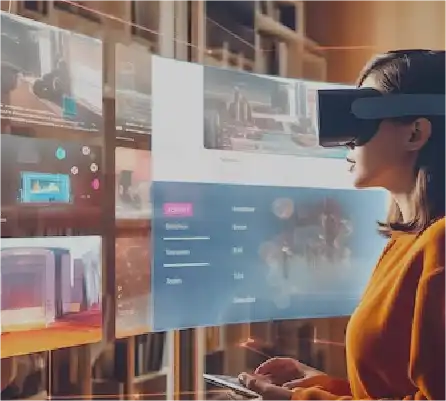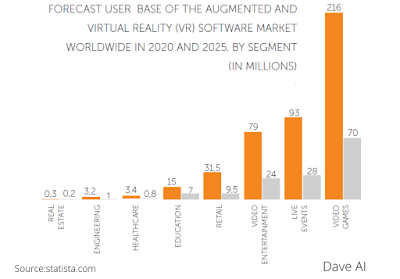Project Management
How AR and VR are reshaping the Retail landscape?
- Shivani Goyal
- May 21, 2021

The retail industry is one of the biggest industries on the planet and a critical element in the backbone of the global economy. Virtual Reality and Augmented Reality are starting to make bigger gains in the ever-evolving retail world by creating new customer experiences that are memorable and unique. Businesses are differentiating themselves through technological hybridisations to appeal to their consumers in innovative ways.
Implementation of AR and VR helps retailers and consumers alike have a better shopping experience while reducing operating costs for retailers. The spread of VR and AR technology is not confined to physical retailers; eCommerce giants, BFSI, healthcare and real estate are getting into the game as well.
Augmented reality (AR) and Virtual Reality (VR) are set to transform the shopping experience and the market space in the same way the internet did. A report from Goldman Sachs states that market for AR and VR in retail will reach $1.6 billion by 2025. Statistics show that two-thirds of internet users would be interested in virtual reality, and 63% said such technologies would change the way they shop.
Big Tech operators and firms such as Microsoft and Magic Leaps introduced their own virtual reality headsets, Facebook, of its part, is working on Augmented Reality glasses, Codenamed Orion. Facebook also wants to partner with Luxottica, to release the glasses between 2023 and 2025. And they’re also working on a voice assistant to control the glasses, according to CNBC. Indeed, voice is an even hotter trend in the retail world and combining the visual and voice aspects of commerce in the 2020s could lead to yet more innovation and disruption in the space.
Let’s see how some of the big brands have started implementing AR and VR to provide an immersive and engaging customer experience.
- IKEA has created a high-definition and interactive showroom that uses the immersive power of VR to offer an innovative 3D product experience. They have launched an AR Catalog App which allows users to see how certain items of furniture would look in their homes according to the product’s dimensions.
- Audi has implemented a VR powered system which allows them to launch a customised customer experience.
- Amazon has launched AR features that allow shoppers to picture furniture in their homes.
- L’Oreal store features a Make Up Genius bar where women can virtually try on makeup through the Make Up Genius app on mobile devices.
- Walmart became a sponsor of Jurrasic World’s AR game, offering a different twist on product exploration by using the game (a tie-in to the movie that, very much like Pokémon Go, enables players to hunt and capture dinosaurs) to drive traffic to the store. Consumers could go to Walmart to access virtual supply depots in the game which contained items that players could not get elsewhere.
What is the future of AR and VR in Retail?
In retail, approximately 32% of shoppers are regular users of AR and 73% of smartphone AR users are highly contented with the experiences. 88% of mid-sized companies are already using AR in some capacity. 71% of consumers say they would shop more often if they used AR.

What consumers look for in the traditional retail experience continues to change and retailers need to change with them. By offering people a fresh technological experience that can benefit how they shop and search for products, it’s highly likely that people will adapt to the introduction of VR and AR in retail. VR and AR in retail holds the potential to create unique brand experiences that drive conversions and higher revenue.
AR lends itself well to consumer applications that answer questions such as, ‘How will the product look in my home? /How will it look on me? Can I know more about this product.’ VR, on the other hand, gets a customer’s imagination into life, helps them with contextual store walks influencing their purchase decision.
Although the implementation of AR and VR has been limited so far, it is expected to change as major supermarkets, malls, department stores & fashion retailers look to roll out for various purposes, from in-store navigation and virtual apparel trials to product demonstrations, games and interaction with virtual store assistants. Furniture retailers are also expected to compete more intensely on AR for projecting furniture into customers’ homes to encourage online purchases and reduce the rate of product returns.
Retailers that already have AR and VR capabilities in place are better prepared to adapt to changing customer behaviour. AR and VR collectively offer a unique shopping experience to the customers that helps them make better decisions while saving their time and keeping them safe by either reducing contact in stores or enabling an immersive experience while shopping from home. Therefore it’s now a good time to think about how one can use AR and VR in their business.
Email Newsletter
get updates & more


